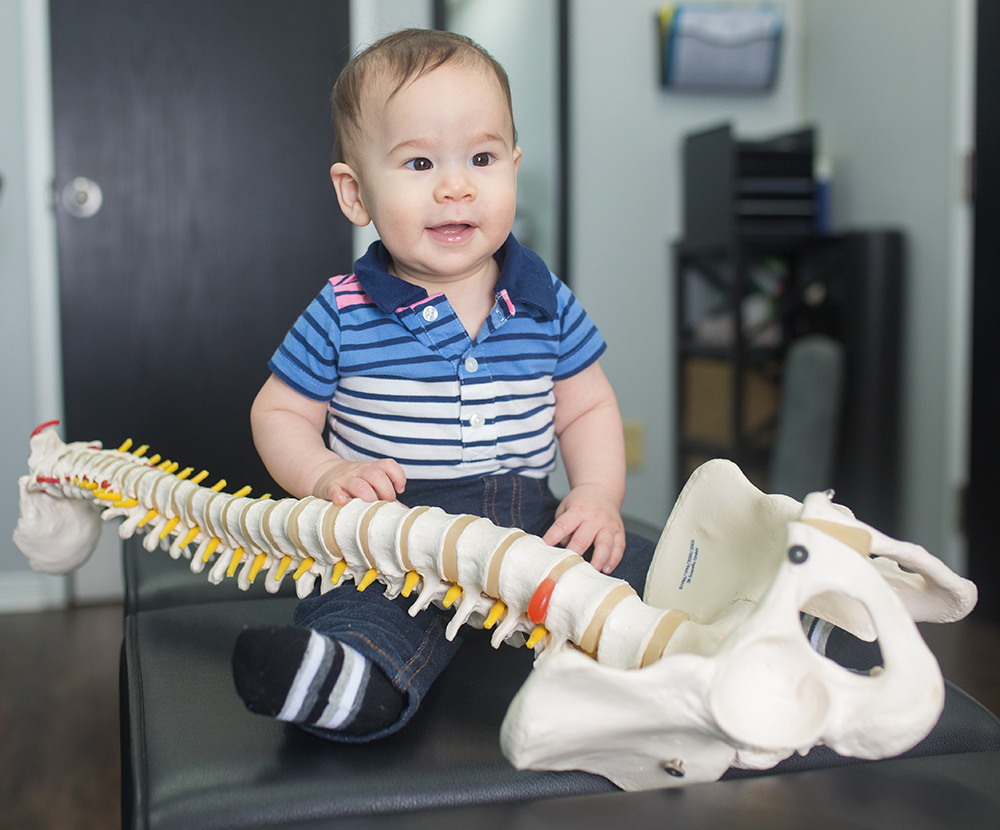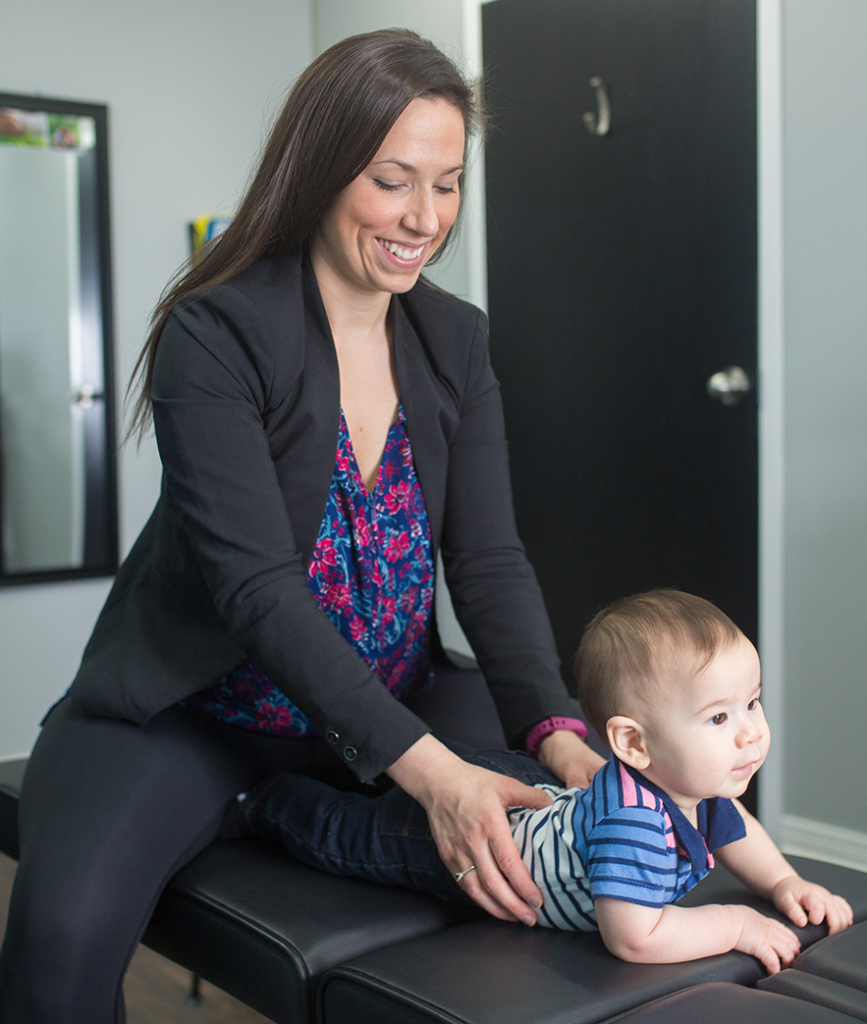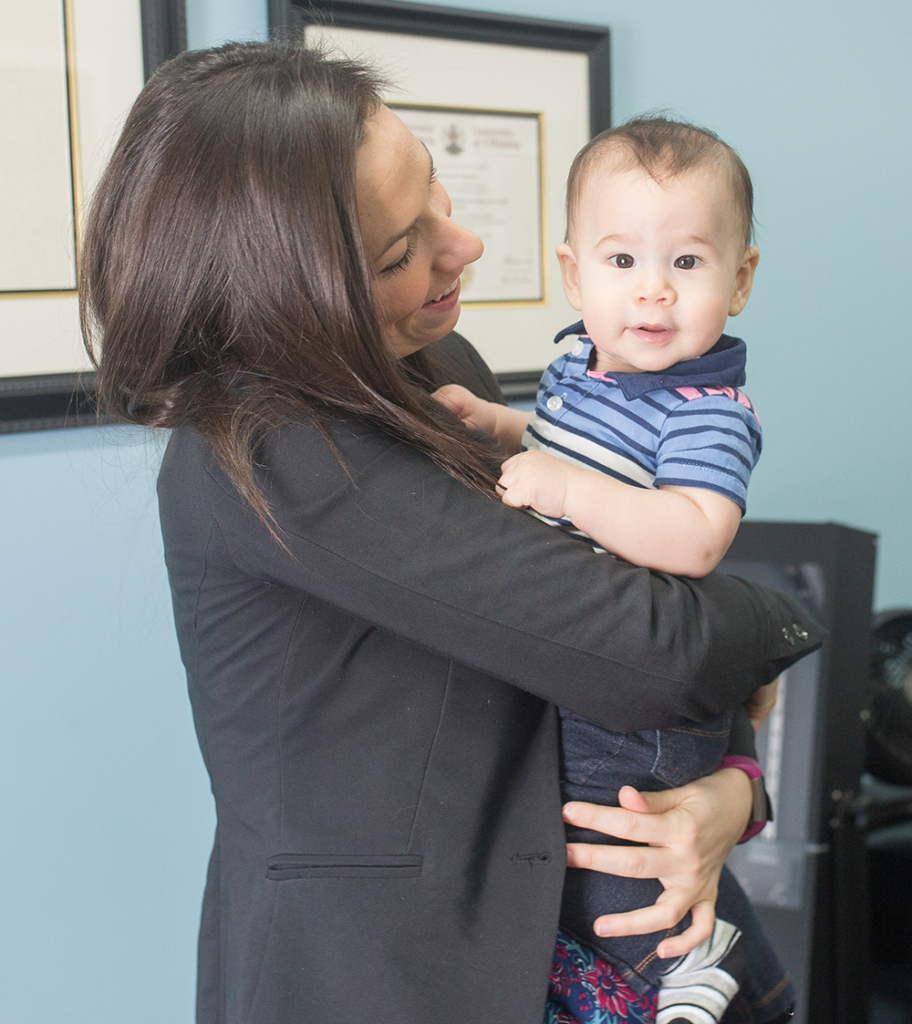Pediatric Chiropractic Care

Chiropractic care is great for all ages, including infants, babies and young children.
Because chiropractic is for more than just pain, but more importantly, for proper neuro-biomechanical function, it is great for all ages, including infants, babies, and young children.
Seeing a chiropractor at a young age—especially within the first two years of life—is especially important since a child will experience the most physical and neurological growth during that time period.
As discussed in the Frequently Asked Questions section of our Chiropractic Care page, stress, whether it be physical, chemical, and/or emotional, is the leading cause of vertebral subluxations, including in children. A vertebral subluxation is defined as a spinal misalignment and/or restriction in movement, which in turn may cause brain-body miscommunication, also known as nerve interference.
Stress is the leading cause of subluxations.
While some may wonder what kind of stress an infant, baby, or young child could be subject to, it is common for the birth process to cause a child’s first subluxation. Even in a normal, natural birth, there will be a great amount of pressure applied to an infant’s head and spine during the descent down the birthing canal. In the event of a difficult labour (dystocia), where interventions are deemed necessary such as the use of forceps, vacuum extraction, excessive force to assist with the birth, or a Caesarean section (C-section), there may be an even greater stress load on the infant’s spine. We all know the importance of supporting a newborn’s neck; therefore, it stands to reason that excessive traction and hyperextension (pulling) during the birth process could result in spinal misalignment and/or restrictions in the infant’s spine. There are many causes for a difficult labour (dystocia) that may lead to these interventions including, but not limited to, abnormal spinal alignment and movement of the mother’s pelvis during pregnancy. Visit our Prenatal Chiropractic Care page for more details.
In addition to the birthing process itself, it goes without saying that as infants, babies, and young children grow and learn to sit, crawl, stand, walk, run, and ride a bike, they will be subject to bumps and falls, which may also cause subluxations.


Chiropractors use specific techniques that are safe and gentle.
When it comes to pediatric chiropractic care, chiropractors use specific techniques that are safe and gentle to take into account the spinal fragility and anatomical differences of the infant, baby, or young child. Although adjustments are performed differently, just like with adults, they help correct subluxations by ensuring proper spinal alignment, regaining proper movement where restriction is noted, and improving brain-body communication (reducing nerve interference). Ensuring proper neuro‑biomechanical function not only supports a healthy development, but may also play an important role in the achievement of developmental milestones.
As the mother of two young children, and having undergone extensive pediatric training (see Dr. Josée’s Curriculum Vitae), Dr. Josée has a special interest and a lot of experience caring for infants, babies, and young children. She understands that when it comes to your little ones, you may have a lot of questions before deciding to bring your child in for an exam or when choosing your family chiropractor. For more information, see the section below for the answers to our most frequently asked questions.
Frequently Asked Questions
The presence of vertebral subluxations may not be apparent in the first few years of life. In fact, just like with adults, subluxations can negatively affect your child’s health without your knowledge. Since the first subluxation often takes place at birth or in the first few years of life, and since the first two years are such an important period of growth and development, it is recommended to get your infant, baby, or child checked by a chiropractor as soon as possible. Assessing their spine does not mean that they will automatically require an adjustment, but if they do, this will set them on a path towards optimal health and may help prevent future problems.
There may be signs that parents will want to look out for that could indicate that their child is experiencing a vertebral subluxation. These include:
- a noticeable head preference (tendency for the baby to either tilt or turn their head to one side)
- restricted movement of the head or neck
- overarching of the back when laying down
- difficulty nursing on one side
- general fussiness for no apparent reason
- facial and cranial asymmetries
- jaw deviation
- high or low tone presentation
- delayed developmental milestones
